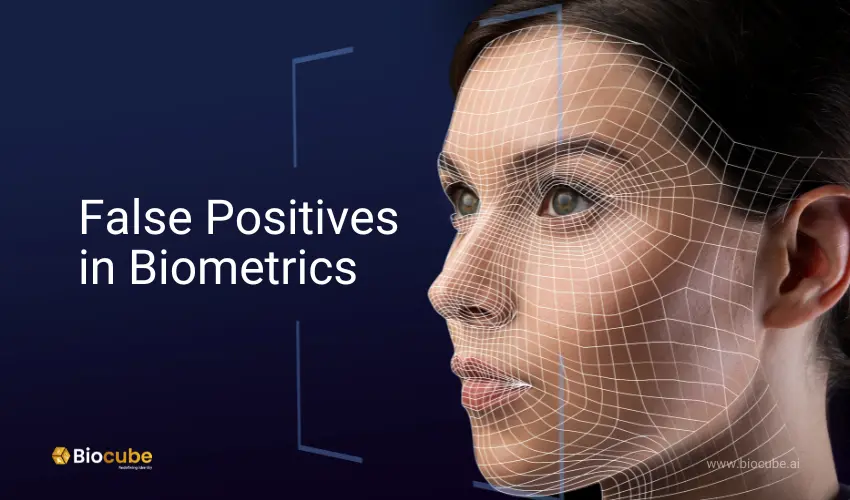
In biometrics, a false positive is a scenario wherein a user’s biometrics are matched with another person, giving them access and authentication, which proves detrimental to organizations. In 2018, 64% of North America and European biometric users were concerned about the risk of false positives in workplaces. Biometrics are supposed to be one of the most secure and safest access, authentication, and attendance marking methods.
Unfortunately, the risk of someone else using your digital identity and linked accounts seriously threatens enterprises. It could lead to access to personal information, sensitive company records, financial losses, and more.
Detrimental Scenarios of False Positives
Criminal Record Mismatch
One of the significant drawbacks of false positives is mismatching the digital biometric identity of a person with a criminal record holder. Such an instance can wrongfully flag an individual at border crossings or airports and deny passage.
The resolution would happen too late, and the entire migration or travel process of the individual and the authority would be wasted. Similarly, if a biometric mismatch of a person happens during the post-investigation scenario, it could identify the wrong person involved in the crime, again leading to dire consequences.
Revoked Access at Workplace
If a digital biometric identity system recognizes a person as another, who has already entered the premises, it may flag the individual and revoke access. Moreover, the attendance or the user’s arrival will not get marked, leading to absenteeism.
It will also require additional steps like informing the manager or the host about the arrival and manually marking working hours and presence. The more significant issue is that it will create security havoc regarding who initially accessed the building using the person’s biometrics, which could be impossible to detect if the imposter has already left the building.
Loss of Data Privacy
As mentioned before, biometrics are considered secure by most users. However, the risk of becoming vulnerable to false positives poses a serious data privacy concern for the end users. They risk losing all their accounts linked to their unique biometric data.
Even after employing background, liveness, and encryption checks, the fear of data vulnerability is genuine if another individual gains access to accounts. In 2018, more than 1.1 billion Aadhar records were exposed, which included fingerprint scans and identification numbers, which could be used for bank account opening and financial aid, apart from other services. It’s devastating to know that false positives in biometrics can lead to such implications; however, a few measures can be taken to avoid or decrease its possibility.
Measures to Combat False Positives in Biometrics
Choose the Correct Biometric Service Provider
The specialized hardware-driven biometric systems have become penetrable through spoofing and manipulation by criminals. Therefore, opting for a secure system that doesn’t compromise the user’s convenience should be optimal.
The questions you should ask to determine the security level of the biometric system are as follows:
- How does it store user data?
- How does it secure the data?
- Is the data accessible on the user’s device?
- How much is the false acceptance rate?
- Where is it being used?
- Is there a better solution?
Undertake Rigorous Testing and Evaluation
One of the simplest methods of reducing the instances of false positives is rigorously testing a biometric system or using its trial version until you are satisfied. The organizations offering biometric recognition systems undertake this step; however, it doesn’t harm if you test it yourself instead of relying on word-of-mouth publicity.
It’s best to state your requirements before you implement the solution at your organization, as it will give you the satisfaction of user security. Moreover, if multiple users have tested the solution, the chances of false positives become slim, and the chance of delivering a better user experience increase.
Explore the System Capabilities
Many organizations fail to recognize the artificial intelligence algorithm capabilities of biometric systems. The AI-driven solution comes with in-built scenarios to recognize an individual from a distance, under different lighting conditions, moods, and more.
Suppose you opt for a high-end biometric solution that seamlessly integrates with your existing platform or app and offers multiple scenario-driven AI capabilities. In that case, it is an excellent choice for your organization. Such a system reduces false positives with higher accuracy than specialized hardware or other available systems while saving installation costs and rollout time.
Conclusion
False positives are a significant and common problem with biometric systems. The implications of the mismatched identities are also detrimental to the end user and the organization. However, taking measures can reduce such instances to a minimum.
Moreover, it can also re-establish the trust of the end-users in biometric systems. Besides, it will reduce the chance of data breaches linked with biometrics, making it more credible than any other solution.
Subscribe to our weekly newsletter below and never miss the latest product or an exclusive offer.
